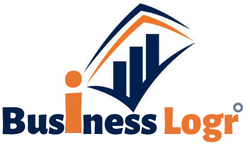
Arvind made a key announcement of demerging two of its segments into separate entities at a recently held analyst meet. The company’s Q2FY18 numbers were rather uninspiring.

GST disruptions, a challenging domestic environment, and high raw material prices took a toll on the company’s textile segment (constituting 50-60 percent of the total consolidated revenue) performance.
Branded apparels (comprising 30-40 percent of the total consolidated revenue) reported an impressive set of numbers in terms of turnover and operational efficiency because of a recovery in wholesale and retail channels in August and September.
Corporate restructuring
Arvind’s move entails demerging the branded apparel and engineering arms of the company, thereby creating two new listed companies by the name of Arvind Fashions and Anup Engineering, respectively. The basis of allotment is as follows:-

Implications for Arvind
Post demerger, Arvind will continue its core business of textile product manufacturing (across categories such as denim fabric, woven fabric, garments, voiles, knitwear), in addition to managing the other relatively smaller segments such as Arvind Internet and technical textiles. To keep the business model asset-light and generate steady return on capital, no investments will be made in capital-intensive backward integration technologies (fibre and yarn manufacturing).
By virtue of the strategy, a significant chunk of Arvind’s resources (which, until now, were allocated to the branded apparel space) will be used to expand the textile business alone. The company seems well poised to capitalise on tailwinds such as a level-playing field post GST, consolidation of the supply chain at the retailers’ end, and China losing its market share in the global textile domain.
Capex of Rs 1,500 crore has been planned over the next 3-4 years for vertical integration towards garmenting, introduction of value-added apparel, tripling the garment manufacturing capacity (from the present level of 30 million units per annum), business process reengineering, and exploring technical textile opportunities.
Additionally, Arvind aims to boost its cash flows from garmenting by progressively scaling up utilisation levels at its Ethiopia-based plant, which will exclusively cater to the export markets in Europe and US without attracting any duty. The facility is likely to break even by the end of Q3FY17 and could lead to a noticeable increase in the company’s turnover starting H2FY19.
Arvind Fashions all geared up too
Arvind Fashions is tentatively scheduled to be listed in the next 8 months. Arvind will hold nearly 90 percent of Arvind Fashions’ share capital. This business will handle trading activities only.
Arvind Fashions’ brand portfolio will remain unchanged, as stated below:-

To capitalise on the high growth potential in this space, Arvind Fashions plans to invest Rs 150-200 crore primarily through internal accruals every year for network and digital expansion (the latter to be undertaken through the ‘NNNOW.com’ portal).
2 out of 3 brands, that are EBITDA negative at the moment, are expected to turn profitable from H1FY19. This, in turn, will ensure that Arvind Fashions gets off to a good start. Since roughly 80-90 percent of the branded garments will be sourced directly from warehouses of the foreign brands or through manufacturers associated with them, Arvind Fashion’s procurement costs can be kept low.
Though top-line prospects of Arvind Fashions are not a cause of concern, the margins in businesses like these (where the company is a mere intermediary) are much lower than Arvind’s textile business, which combines textile manufacturing and selling activities.
Anup Engineering’s independent identity
Critical process equipments used by companies in the oil and gas, petrochemicals, fertilisers, and pharma sectors will be manufactured by Anup Engineering. The business, with zero debt in its books as on 30th September, 2017, is capable of continuing its trend of decent return ratios. Its average order size is Rs 30-50 crore. However, the company’s cash flows are vulnerable to changes in the macro-economic environment and capex cycle slowdown.
Valuation
A subdued performance of the textile segment in H1FY18 is likely to impact Arvind’s performance for the remainder of the fiscal. In stark contrast, the brands and retail segment, in spite of their low margins, appears to be in a sweet spot.

Simplification of the business structure may be beneficial for shareholders since the value unlocked from the market cap of the four segments (Rs 11,677.2 crore) is expected to be marginally higher than Arvind’s current market cap (Rs 10,861.7 crore). Nonetheless, the possibility of further value unlocking by way of getting strategic investors on board in the yet-to-be-listed companies cannot be ruled out.
Source:-moneycontrol.



